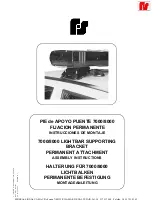
Locking clip
Locking clip
Locking clip
Detaching the connector correctly
In the first step, the grey
locking clip
is pulled out. Press the grey
locking
clip
, which functions as a lever for loosening the plug and pulling it out.
Because the plug is often connected very tightly to the socket, it is
helpful, when pressing the
locking clip
, to first push the plug towards the
connection socket before subsequently pulling on it.
In addition, temperature fluctuations in the engine bay can result in a type
of “vacuum effect” between the plug and the socket. This can be solved by
lightly “wiggling” the plug.
In the first step, the grey
locking clip
is pulled out. Press the grey
locking
clip
, which functions as a lever for loosening the plug and pulling it out.
Because the plug is often connected very tightly to the socket, it is
helpful, when pressing the
locking clip
, to first push the plug towards the
connection socket before subsequently pulling on it.
In addition, temperature fluctuations in the engine bay can result in a type
of “vacuum effect” between the plug and the socket. This can be solved by
lightly “wiggling” the plug.
The plugs are locked into the connection sockets by means of a
locking
clip
. Press the
locking clip
and pull the plug.
Because the plug is often connected very tightly to the socket, it is
helpful, when pressing the
locking clip
, to first push the plug towards the
connection socket before subsequently pulling on it.
In addition, temperature fluctuations in the engine bay can result in a type
of “vacuum effect” between the plug and the socket. This can be solved by
lightly “wiggling” the plug.



































